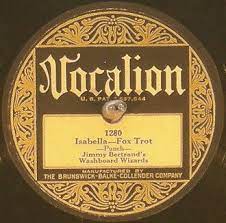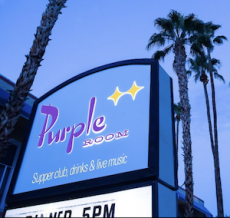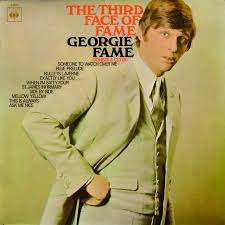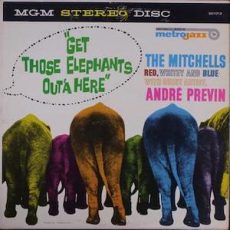
Daily Dose Of Jazz…
Ryo Kawasaki was born February 25, 1947 in Kōenji, Tokyo during Japan’s recovery in the early post World War II period. His mother encouraged him to take piano and ballet lessons, and he took voice lessons and solfege at age four and violin lessons at five, and he was reading music before elementary school. As a grade scholar, he began a lifelong fascination with astronomy and electronics. When he was 10, he bought a ukulele and at 14 he got his first acoustic guitar. The album Midnight Blue by Kenny Burrell and Stanley Turrentine inspired him to study jazz.
In high school, he began hanging out at coffee-houses that featured live music, formed a jazz ensemble and built an electronic organ that served as a primitive synthesizer. By the time he was 16, his band was playing professionally in cabarets and strip joints. Although he continued to play music regularly, he attended Nippon University, majored in physics and earned his Bachelor of Science Degree. He also did some teaching and contest judging at the Yamaha musical instrument manufacturer’s jazz school. Additionally, he worked as a sound engineer for Japanese Victor Records and BGM/TBS Music, where he learned mixing and editing.
He recorded his first solo album for Polydor Records when he was 22. And was voted the No. 3 jazz guitarist in a Japanese jazz poll. He spent most of the next three years working as a studio musician on everything from advertising jingles to pop songs including countless radio and TV appearances. He recorded his second album for Toshiba when he was 24. He played with B.B. King at a blues festival and also met George Benson and they jammed for five hours at Kawasaki’s house.
Moving to New York City in 1973 he was offered an immediate gig with Joe Lee Wilson playing at the Lincoln Center as part of the Newport Jazz Festival. Soon Ryo was jamming regularly as part of the loft scene and was invited to play with Bobbi Humphrey. A few months later Gil Evans invited him to join The Gil Evans Orchestra which was then working on a jazz recording, The Gil Evans Orchestra Plays the Music of Jimi Hendrix. He would go on to record on Evan’s There Comes a Time. He became the guitarist in the Chico Hamilton Band, made his debut U.S. album, Juice, in 1976 for RCA and was one of the first Japanese jazz artists to sign with a major label in the States.
He explored Music of India, recorded with Dave Liebman and toured European jazz festivals with Joanne Brackeen as a piano/guitar duo and they recorded a pair of albums. In the mid-1980s, Kawasaki drifted out of performing music in favor of writing music software for computers. He also produced several techno dance singles, formed his own record company called Satellites Records, and later returned to jazz-fusion in 1991.
He continued to release albums up to 2017 and had two retrospective Ep’s released spanning years of 1976~1980 and 1979~1983. Guitarist and keyboardist Ryo Kawasaki transitioned on April 13, 2020 in Tallinn, Estonia at the age of 73.
More Posts: audio engineer,bandleader,composer,guitar,history,instrumental,jazz,keyboard,music

Daily Dose Of Jazz…
Jimmy Bertrand was born on February 24, 1900 in Biloxi, Mississippi, and moved to Chicago, Illinois in 1913. He began playing in the State Theatre Orchestra before joining Erskine Tate’s Vendome Orchestra from 1918 to 1928. He became active on the blues and jazz scene of the 1920s in Chicago.
During the 1920 he did a great deal of teaching and his pupils included Wallace Bishop, Lionel Hampton, and Big Sid Catlett. He recorded with Louis Armstrong, Johnny Dodds, Erskine Tate, and Blind Blake, amongst many others.
Jimmy went on to play with Don Cooke and Lee Collins. He led own group, Jimmy Bertrand’s Washboard Wizards during that period, and worked often with pianist Jimmy Blythe.
He led his own band during the 1930s and early 40s before retiring and going to work in a meat packing plant. Percussionist and xylophonist Jimmy Bertrand, who was the brother-in-law of Jelly Roll Morton, transitioned in Chicago in August 1960.
More Posts: bandleader,drums,history,instrumental,jazz,music,xylophone

The Jazz Voyager
In the air once again and sailing onwards to the West Coast to witness a talented vocalist at the Purple Room in Palm Springs, California. This is the Jazz Voyager’s first trip to this venue and I am looking forward to this excursion. Performing this weekend is Tony nominated Ann Hampton Calloway for two nights only. She will be celebrating one of America’s most beloved artists, Peggy Lee.
The sophistication and glamour of the Rat Pack era comes alive at Michael Holmes’ Purple Room, the desert’s premier supper club. Tucked away in the Club Trinidad Hotel, The Purple Room is where Frank, Sammy, Dean, and their pals cavorted on and off the stage in the swinging 60s. Step in and you’ll be transported back to the elegance of the era: an intimate and inviting room, classic cocktails with a modern twist, world-class cuisine, and the best in live entertainment – six nights a week! Hobnob with celebrities, locals, and visitors alike at Michael Holmes’ Purple Room.
The Purple Room is located at 1900 E Palm Canyon Drive 92264 and their number is 760-322-4422. In order to get more information on showtimes and tickets then visit notoriousjazz.com/event/ann-hampton-callaway.
More Posts: adventure,album,club,festival,genius,jazz,museum,music,preserving,restaurant,travel,vocal

Daily Dose Of Jazz…
Leslie Richard Condon born February 23 1930 in Kennington, London, England of Irish stock, took up the trumpet in his late teens. Largely self-taught, he worked with local dance bands before doing his national service, when he played for the Eager Beavers at RAF Wroughton, Wiltshire.
Turning professional in 1952, he played with the usual round of palais bands and then took to the sea as a member of Geraldo’s Navy. Working as a musician on Cunard liners crossing the Atlantic allowed him to worship at the feet of the great exponents of bebop on New York’s 52nd Street. Originally a conventional jazz player, like others of the second wave of modernists he was bowled over by bebop, forging an eloquent style of his own, building on what he knew of Dizzy Gillespie, Fats Navarro and Miles Davis.
In 1954, he became a founder member of British bebop pioneer Tony Crombie’s new band, playing alongside trumpeter Jimmy Deuchar and trombonist Ken Wray. Despite having little formal musical education, he was a valued composer and arranger, contributing to the Crombie band book and recording with the drummer for Decca in 1955. He also began to record and solo regularly with bands led by Vic Lewis and Hayes, before joining drummer Tony Kinsey’s successful quintet.
Condon was among the local players added to form Woody Herman’s (Anglo-American) Herd when the veteran US bandleader toured the UK in 1959. He formed a rewarding friendship with Herman’s lead trumpeter Reunald Jones, formerly a key member of the Count Basie orchestra.
He went on to have a year-long association with Jamaican alto-saxophonist Joe Harriott, famous for his pursuit of “free form” jazz alongside his more structured pieces. He went on to work with a dazzling array of local movers and shakers, recording with the Hayes and Tracey big bands and performing with just about every other significant jazz modernist of the day. An active studio musician, he played for radio and television shows, recorded with singer Georgie Fame and appeared on the Beatles’ Revolver album. His theatre work included a two-year stint with the musical show Bubbling Brown Sugar and a visit to South Africa in 1981, accompanying the singer Jack Jones.
Dental problems forced Condon to cease playing the trumpet in 1990, after which he confined himself to playing the piano at home, composing and studying music. Trumpeter Les Condon, one of the modern players, transitioned on October 30 2007.
More Posts: history,instrumental,jazz,music,trumpet

Daily Dose Of Jazz…
Gordon “Whitey” Mitchell was born on February 22, 1932 in Hackensack, New Jersey. He began on clarinet and tuba as a youngster before choosing bass as his primary instrument. He studied radio & television at Syracuse University and then plunged into the New York jazz scene, becoming a regular at the famed nightspots Birdland and Basin Street East.
He led his own groups at The Village Vanguard and The Embers and later toured with big band greats Benny Goodman and Pete Rugolo, played Carnegie Hall with Gene Krupa, appeared with Buddy Rich, Ella Fitzgerald, Dizzy Gillespie and Lester Young on Jazz At The Philharmonic.
In the early 1950s he played with Elinor Sherry and Shep Fields before serving in the Army during the Korean War. From 1954 he worked freelance in New York City, playing with Gene Krupa, Mel Tormé, Jack Jones, J.J. Johnson, Kai Winding, Lester Young, Charlie Ventura, Herbie Mann, Betty Roche, Oscar Pettiford, Gene Quill, Joe Puma, Johnny Richards, Peter Appleyard, André Previn, Benny Goodman, and again with Rugolo.
He performed on hundreds of recording sessions, television and film scores but only released one album under his own leadership on ABC-Paramount in 1956, and one with his brother Red and Blue Mitchell in 1958 as The Mitchells: Red, Whitey & Blue, released on MetroJazz Records. Whitey recorded with Anita O’Day, Barbra Streisand, Anthony Newley, and played the bass solo introduction on Ben E. King’s hit record Stand By Me.
After 1965 he largely ceased playing jazz and moved to Hollywood, California on advice from Lenny Bruce and André Previn to pursue a career as a television writer. He worked on shows such as Get Smart, All In the Family, The Jeffersons, Good Times, The Mary Tyler Moore Show, The Odd Couple, Mork and Mindy, and several Bob Hope television specials. He wrote the feature film Private Resort starring Johnny Depp.
As an educator he taught screenwriting at UCLA and UC Riverside. In 1995 he had his own radio show, The Power Lunch and wrote a golf column for a local magazine. He recorded his CD Just In Time and played jazz in all the nightclub venues. He was the author of two books, Hackensack to Hollywood: My Two Show Business Careers and Star Walk: A Guide to the Palm Springs Walk of Stars.
Bassist and television writer/producer Whitey Mitchell, who often placed in the Metronome and Downbeat jazz polls, transitioned on January 16, 2009.
More Posts: bandleader,bass,history,instrumental,jazz,music



